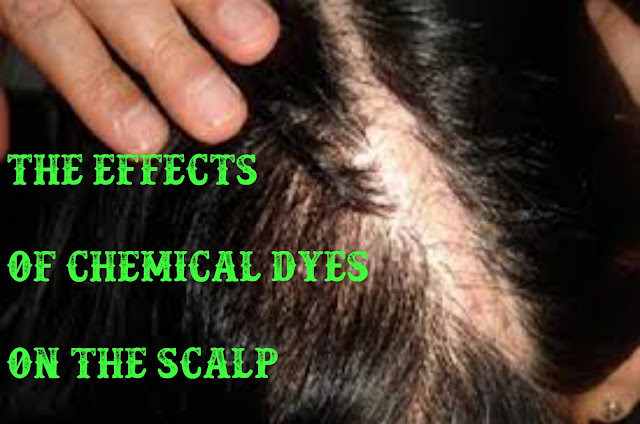Why You Should Avoid Chemical Dyes If You Have a Sensitive Scalp
Have you ever had an allergic reaction to a new shampoo or conditioner? If you have, it may be due to chemical dyes in the product that irritate your scalp.
For example, if you notice any redness or irritation after washing your hair with a certain shampoo, it could be the result of a compound called paraphenylenediamine (PPD), which is found in many commercial hair dyes and some shampoos and conditioners.
While this type of reaction may seem minor, it can lead to chronic inflammation and potentially even more serious scalp problems down the road.
The Importance of pH balance
Maintaining a healthy pH balance on your scalp is essential for preventing dandruff and an itchy, flaky scalp.
Using chemical dyes that are loaded with ammonia or sulfates can throw off your scalp's natural balance, making it more prone to irritation.
There are other safe options for coloring your hair if you're worried about chemicals; Henna-based powders, which deposit color gradually over time and fade gradually as well, are gentle enough to use on all hair types.
Do note that while they won't deposit dye onto your scalp like chemical dyes do, they can still stain both skin and clothes—try applying henna to the skin before hair to get around that potential issue.
And never leave the henna on longer than recommended, because it can turn yellow when left in contact with air for too long.
There are also a number of semi-permanent alternatives to chemical dyes that don't contain ammonia or sulfates but do contain things like parabens (synthetic preservatives), so make sure you check ingredients lists if you have sensitive skin.
Also avoid reds and purples, which have been linked to reactions in some people; blue may be better tolerated by those who are particularly sensitive.
Hair masks can also help restore moisture to damaged hair caused by harsh chemicals in permanent dye.
Who is affected by it?
For example, some hair dyes use ingredients like ammonia and resorcinol, which can irritate sensitive skin.
The most common reactions include
- redness; burning; tingling; stinging; swelling; blisters; itching; rash; acne-like bumps (acneiform eruptions); dryness/flaking of the scalp (excessive seborrhea); increased sensitivity to sunlight (photosensitivity).
- Some of these reactions occur right away while others take longer to develop. Redness is usually an immediate reaction while acne-like bumps may not appear until days later.
How do you avoid it?
- If you want to avoid chemical dyes, opt for natural coloring.
- There are plenty of alternatives out there—everything from henna to beet juice to coffee grounds.
- These products have a milder effect on your hair and won’t irritate your scalp as much as chemical dyes.
- They also tend to fade more gradually, which can help you avoid that awkward in-between phase when you look like an old lady with gray hair but haven’t quite made it to silver fox status yet.
- Just make sure you don’t mix natural and chemical dyes—the combination can cause some serious damage! Instead, stick to one or the other.
What does this mean for your hair?
Because chemical dyes can irritate your scalp, they can also affect hair health.
Chemical dyes contain ammonia, which is damaging to both hair and scalp if not removed properly before washing.
Damaged hair is more prone to breakage, which means losing precious strands (which are filled with keratin protein that promotes healthy skin cells).
A damaged scalp can produce less oil, which means hair will become dry and brittle over time.
This leads to breakage due to increased tension when combing through tangles (ouch!).
Breakage also means you may start seeing shorter strands as time goes on—which look thinner overall.
There are a few things you can do to protect your tresses from damage from chemical dyes
What can you do about it?
If you have sensitive skin, it’s important to avoid harsh chemicals and dyes. Instead, choose more natural hair coloring options.
There are many different brands that offer chemical-free dye options for your hair.
These products contain ingredients like henna and indigo, which are naturally derived from plants and flowers.
These dyes come in a variety of colors and are often less expensive than traditional chemical dyes.
If you’re looking for something permanent, consider getting your hair dyed with actual color instead of semi-permanent dye or temporary color spray.
The results last longer than other types of dyeing methods because they penetrate deeper into your hair shafts to create long-lasting results.

Comments
Post a Comment